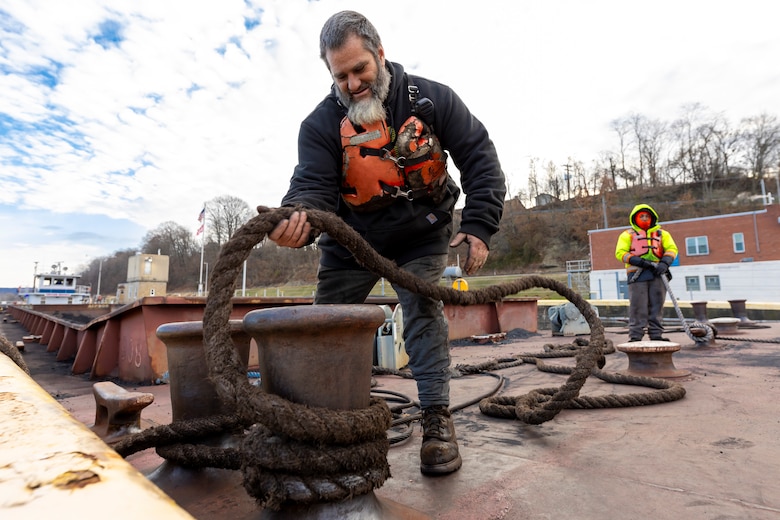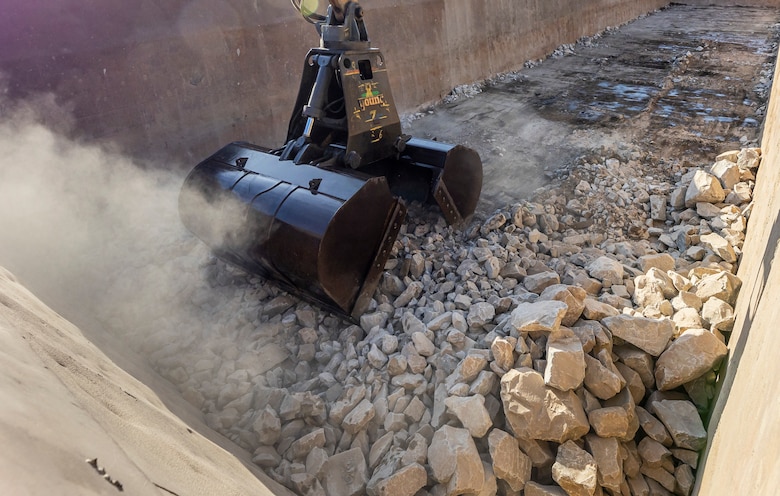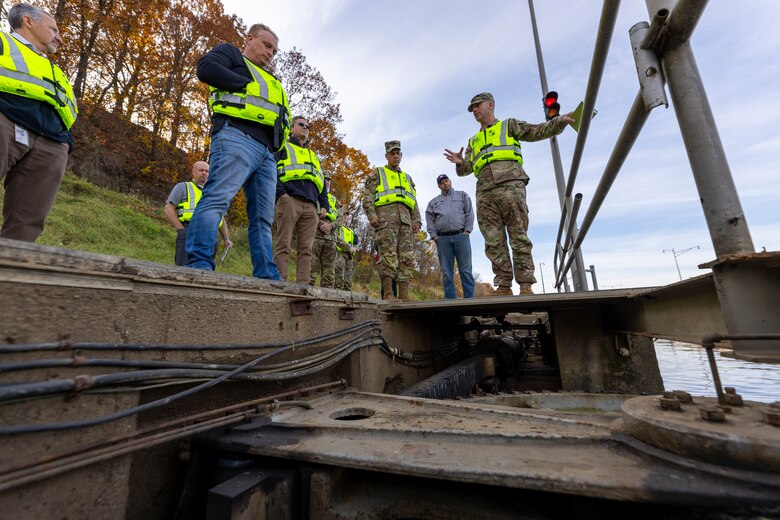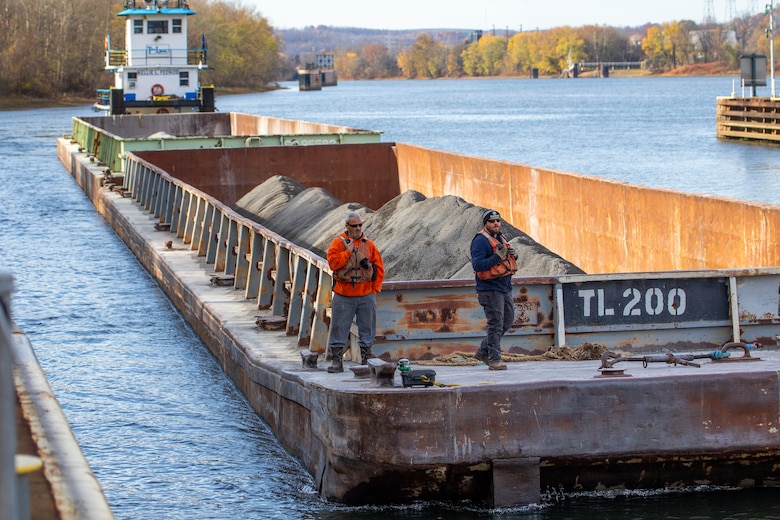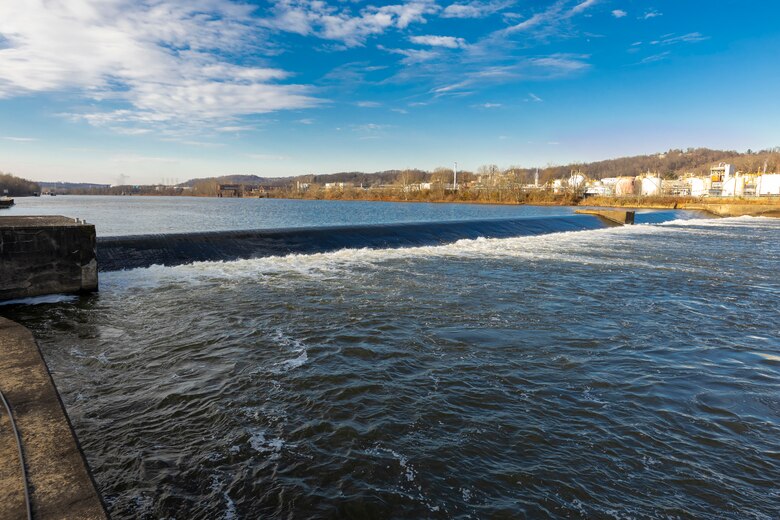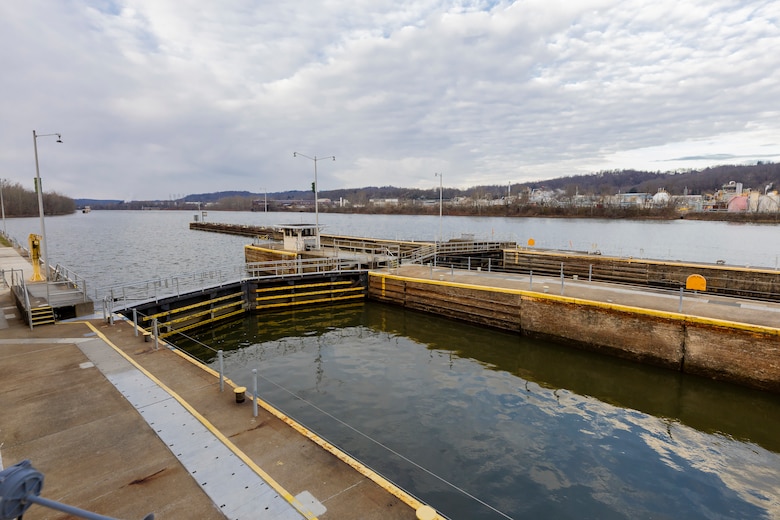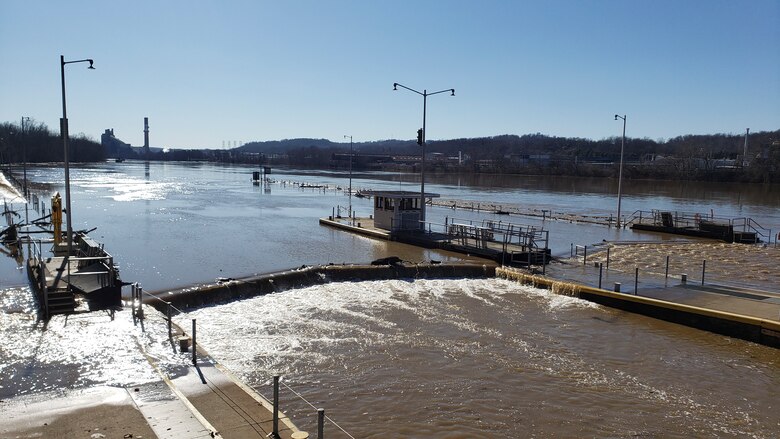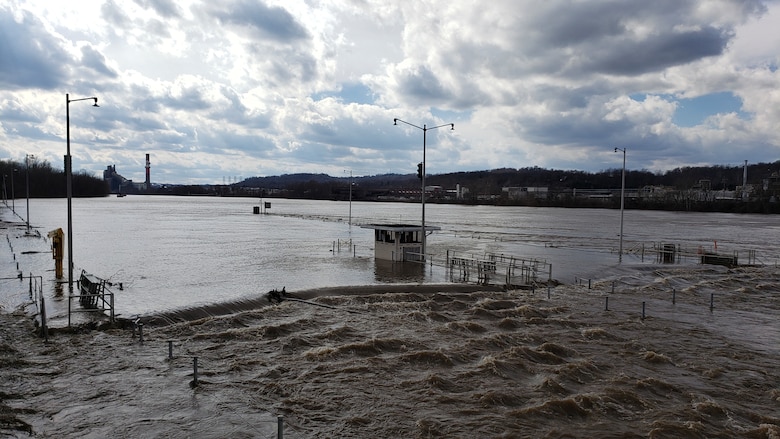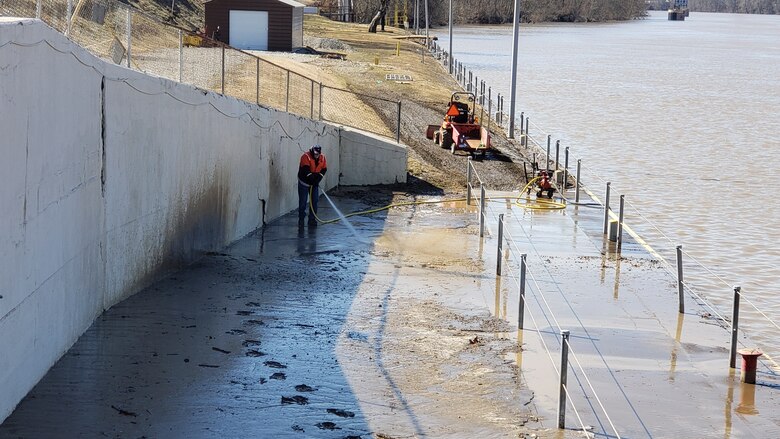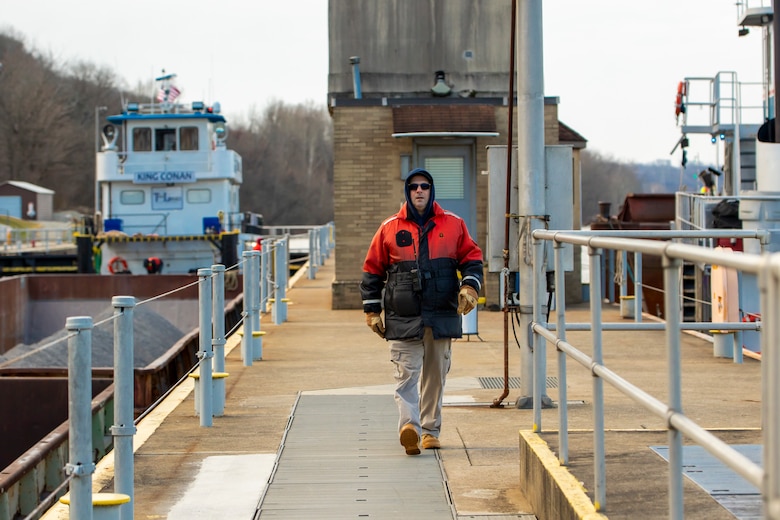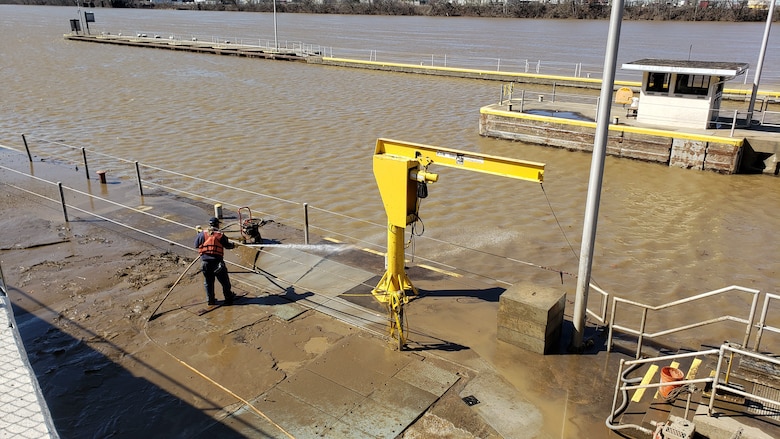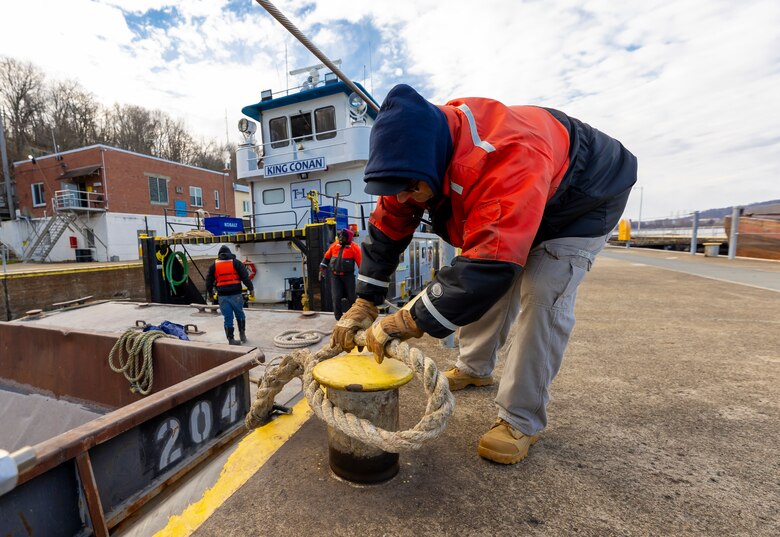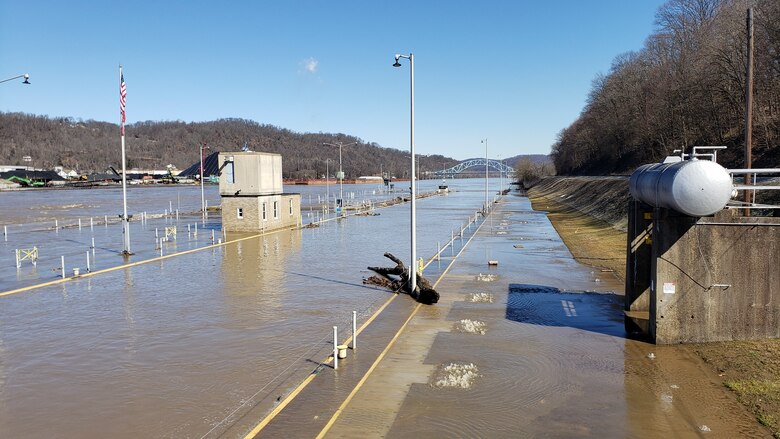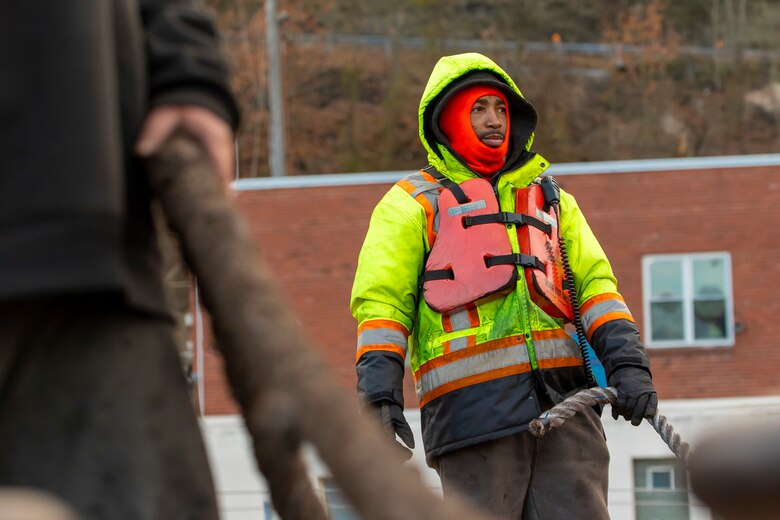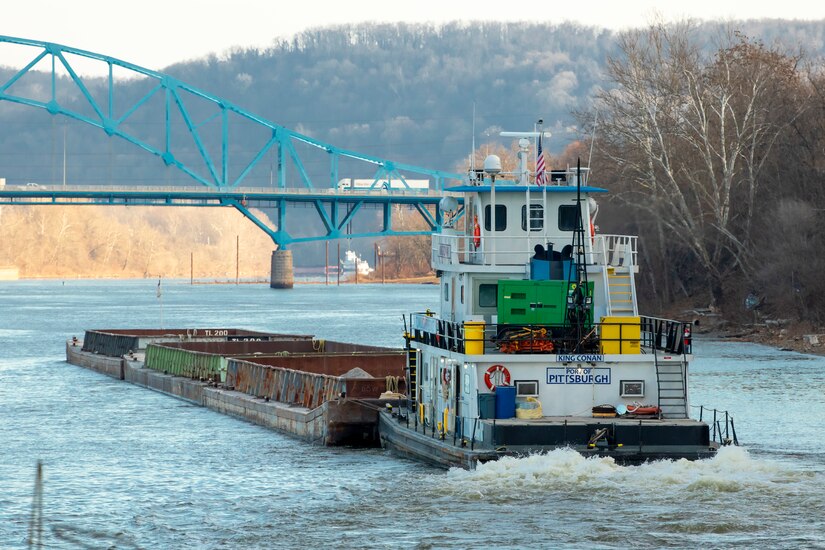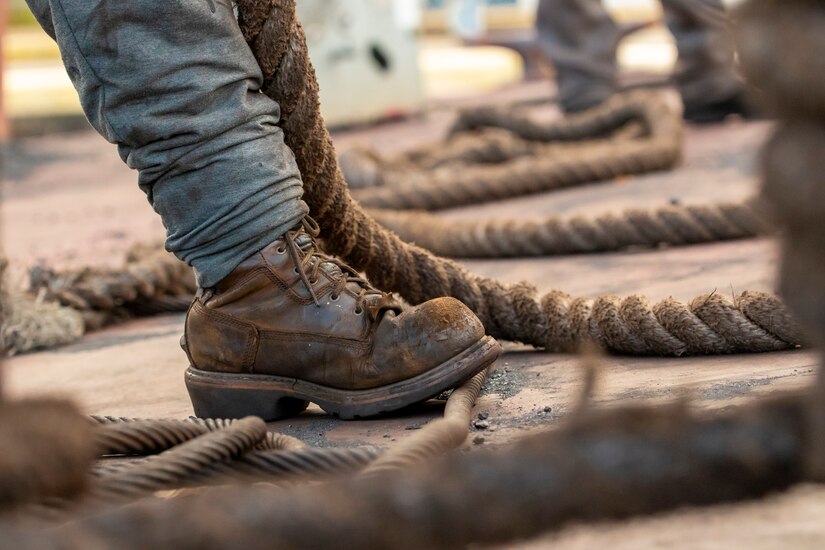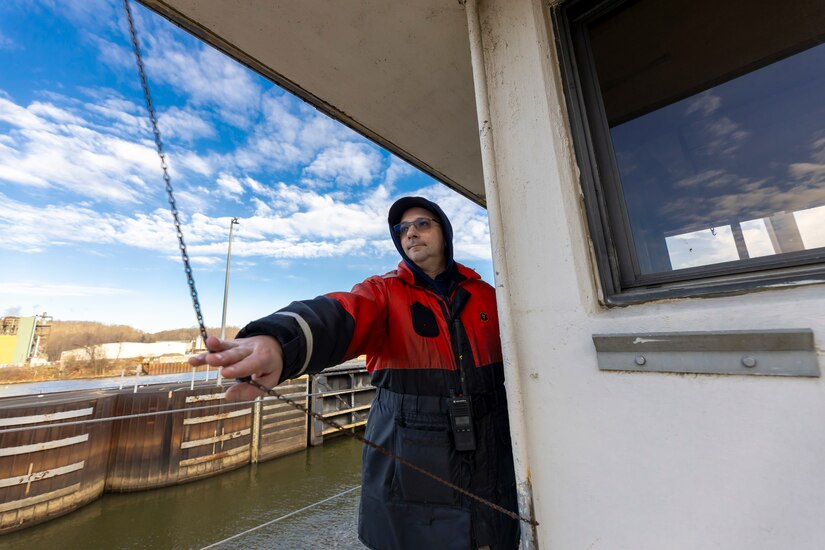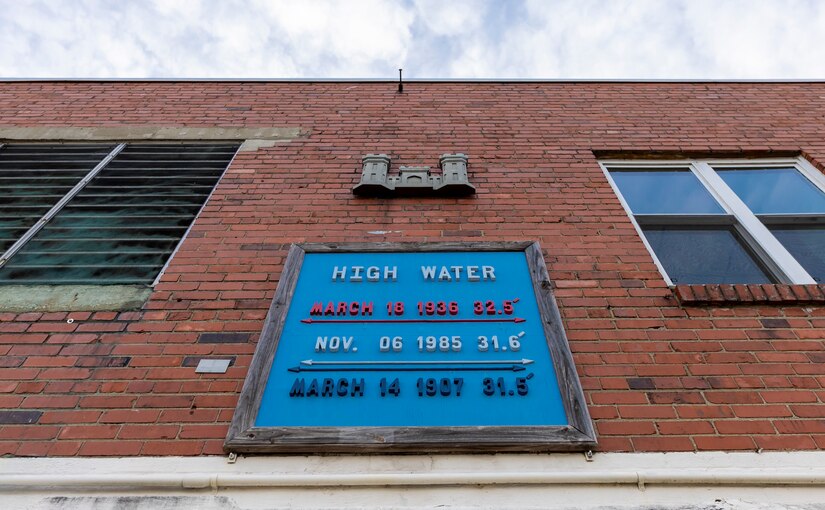Headwaters Highlights: Elizabeth Locks and Dam crews keep navigation afloat through one of the oldest locks in the Nation
View SourcePHOTO DETAILS / DOWNLOAD HI-RES 1 of 29
Jesse Krsul, a lock operator for the U.S. Army Corps of Engineers Pittsburgh District, helps a towboat crew lock through the Monongahela River Locks and Dam 3 in Elizabeth, Pennsylvania, Nov. 29, 2023. The U.S. Army Corps of Engineers Pittsburgh District has operated Elizabeth Locks and Dam since 1907. It is the second oldest navigation project in the Pittsburgh District and is planned for removal as early as 2024. Removing the dam will help equalize the pool on the Monongahela River between the Charleroi and Braddock locks and dams, forming a 30-mile stretch of navigable waterway. The expanded pool will benefit the navigation industry by cutting transportation time in half to pass through the region. The dam’s removal is part of the Lower Monongahela River Project, which constructed upgrades at Braddock and Charleroi in preparation for Elizabeth’s removal. (U.S. Army Corps of Engineers Pittsburgh District photo by Michel Sauret)
PITTSBURGH – The quiet waters of the Monongahela River may experience some explosive rumblings next summer.
One of the oldest navigation dams in the nation is planned to go out with a blast in Elizabeth, Pennsylvania, after more than a century of service to the region.
A contractor will most likely drill holes into the top of the concrete and place tubes in the holes to guide the explosives to the proper depth and location for the blast, according to plans by the U.S. Army Corps of Engineers Pittsburgh District.
The demolition will remove more than 660 feet of dam material, accounting for 10,000 cubic yards of concrete. The contractor can choose to use explosives or may opt for other means to breach the dam, depending on which method will be safest and most effective.
The Elizabeth Dam has held back water for navigation purposes for more than a century, designed alongside two locking chambers to keep navigation and the economy flowing since 1907.
A dedicated crew of lock operators and mechanics have kept the chambers running through its final years. They will continue to work the locks day and night until the entire dam removal is complete, and the navigation channel is safe for passage. Their delicate care of the locks is a stark contrast to the explosive finish the dam may face next year.
“Maintaining an old navigation lock on the river is a lot like working on a classic car,” said Phil Delo, the lockmaster in charge of the Monongahela River Locks and Dam 3 in Elizabeth, Pennsylvania.
After the dam is completely gone and the river is clear of debris, the Pittsburgh District will demolish the chamber walls forming the locks, accounting for another 22,000 cubic yards of concrete. The Pittsburgh District will process the concrete into rip rap to stabilize the banks that will remain in place.
“I will miss this place,” Delo said.
The concrete walls standing today are original to their construction, which began in 1905. Some parts of the walls have required recapping but no major reconstruction. Yet, the mechanical guts that control the locks have needed regular care. The gears, hydraulic systems, and mechanical components that open and close the miter gates and operate the pumps to raise and lower the water levels suffer from regular wear and tear.
“You’ve got to treat this stuff lightly and be careful and gentle,” Delo said. “You can’t just go in there banging around it like a new truck because you will break stuff. You have to go out there methodically.”
He compared the old locks to vintage cars because of his mechanic background and his enthusiasm for muscle cars. Above his work cabinets, Delo displays a row of model cars from some of his favorite movies.
A 1977 Trans Am from “Smokey and the Bandit.” A 1967 Mustang from “Gone in 60 Seconds.” A Gran Torino from “Starsky & Hutch.” Another Mustang, this time a 1968 model from “Bullitt.” Then, towering above them all, a neon green Grave Digger monster truck sits in the center.
“That used to be my kids’ toy,” Delo said with a smile. “I don’t want you guys to think I play with cars all day long here.”
The work keeps everyone plenty busy at Elizabeth. The small crew has been working 12-hour shifts through nights and days with plenty of overtime hours to keep the place running. The Pittsburgh District will provide jobs within the region for everyone once the locks and dam go away.
“I definitely want to stay with the Army Corps. I believe it’s the best agency in the government,” said Jesse Krsul, one of the lock operators.
Maintaining the locks requires extra care because most of the parts making up the mechanical bones and guts don’t exist anymore. If anything breaks, the facility mechanics would have to scavenge parts from another old lock or request special fabrication, which would be incredibly expensive.
“I’m very fortunate to have the crew here who takes a lot of pride in the project,” Delo said. “They will be the main thing I will miss from working here.”
Delo has worked at the locks in Elizabeth for more than 22 years, nearly half his life, he said.
“My kids have grown up while I’ve worked here. My youngest son is in the military now. This is my second home, so there will be a total life change for me when this place is gone,” Delo said.
Throughout his career, Delo worked every possible position at the Elizabeth Locks. He started as an operator, worked his way up to mechanic, and eventually became a supervisor.
“I’ve worked my way up, and I take a lot of pride knowing I might be the last supervisor here,” Delo said. “The Army Corps of Engineers offers an opportunity for everybody. When I started, I never thought in a million years I would become a supervisor.”
Still, a career spanning more than two decades is just a fraction of the 116-plus years the locks have been operating to pass boats through this stretch of river. Barges filled with coal, gravel, salt, fuel, and other commodities have come through Elizabeth daily for more than a century.
The dam’s removal will help equalize the pool on the Monongahela River between the Charleroi and Braddock locks and dams, forming a 30-mile stretch of navigable waterway. The expanded pool will benefit the navigation industry by cutting transportation time in half through this region.
The dam’s removal is part of the Lower Monongahela River Project, which involved major construction at Braddock and Charleroi in preparation for Elizabeth’s removal. The upgrades benefit thousands of vessels that pass through the lower Monongahela River.
In 2023 alone, the Elizabeth facility completed more than 7,200 lockages, an average of 600 per month or 20 per day. The crew of 11 keeps the facility running 24 hours a day, 365 days a year, regardless of weather conditions or federal holidays.
“During the winter, the temperature feels 10 degrees colder than everywhere else because we’re in a valley, and it’s like a wind tunnel,” said Dave Davenport, a lock operator.
The cold wind bites into their skin as operators help deckhands tie off ropes or as they walk along the walls to ensure everyone’s safety. Sometimes, the wind can be so strong it steers barges off course, forcing them to grind into shorelines or scrape the locks’ guard walls. Regardless of weather or the time of year, lock operators and mechanics are on the job.
“When people are eating their Thanksgiving dinner, our crew is out here locking boats. When it’s the middle of January, and it’s two degrees below zero, three inches of snow, or when people are at home in a warm bed, these guys are locking boats. On Christmas morning, when you’re opening gifts with your kids, they’re locking boats,” Delo said.
The only thing that stops traffic is when the valley floods due to either heavy rain or melting snow. When the river rises above the lock walls, it makes traffic impossible at Elizabeth.
“We could be completely dry one day and flooded the next, and we’re here to put the locks back into operation as soon as the river levels are safe to reopen,” Delo said.
The river floods the facility at least once a year. A plaque shows some of the highest levels since 1907, with line markings far above anyone’s head standing on the lock walls below.
The crew doesn’t stop working just because of a flood. When the river leaves behind debris, tree limbs, soil, and garbage, everyone from operator to supervisor pitches in to clean up the mess, armed with hoses, push brooms, and skid loaders.
“It’s very messy. It’s very muddy,” Krsul said. “The last high-water event I can remember, the debris covered the entire lock, and it took a while to clean up.”
Delo credits his lock operators and maintenance mechanics for keeping the facility running smoothly for so long. He said it will be hard to say goodbye, not just to the facility, but to the people he has worked with so long.
“I have been fortunate through my time with the corps to work with such good crews,” Delo said. “We’re all a team.”





